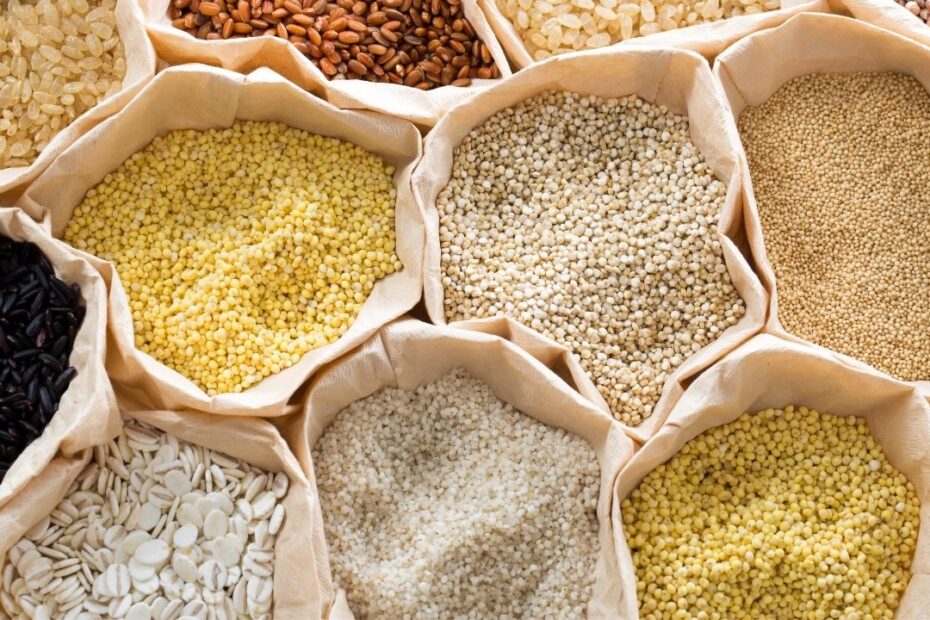Introduction:
Health-conscious individuals have been increasing interest in millet, an ancient grain that is high in nutrients, so it’s not surprising that millennials are warming up to this superfood. The amazing health advantages of millets, a category of small-seeded grasses that have been grown for thousands of years, are just now coming to light. This article will examine millet’s many health advantages and explain why millennials should include this grain in their diets. To further help you comprehend the benefits of this extraordinary grain, we’ll also address a few frequently asked questions about millet usage.
Why are Millets a Perfect Match for Millennials?
- Millennial-Friendly SustainabilityMillennials are increasingly concerned about sustainable food choices and their impact on the environment. Millet aligns perfectly with these values as it is a highly sustainable crop. Millet requires significantly less water compared to water-intensive grains like rice and wheat, making it an eco-friendly choice. Additionally, millet crops grow well in diverse climates and soil conditions, reducing the need for extensive agricultural practices.
- Allergen-Free and Food Safety:Millet is a naturally allergen-free grain, making it a safe option for individuals with various food allergies or intolerances. With the rise in food allergies and sensitivities among millennials, millet offers a versatile and worry-free alternative for those seeking to avoid allergens without compromising on nutrition.
- Rich Source of Magnesium:Magnesium is an essential mineral for overall well-being, and millet is an abundant source of this nutrient. Magnesium plays a crucial role in muscle function, nerve transmission, and energy production. Millennials leading busy and active lives can benefit from millet’s magnesium content to maintain optimal health.
- Enhancing Brain Health:Millet contains nutrients like phosphorus and B-vitamins, including thiamine (vitamin B1), which are beneficial for brain health and cognitive function. Consuming millet can support mental clarity and focus, helping millennials cope with the demands of modern life.
- Gluten-Free Baking Alternative:For millennials with gluten sensitivities who enjoy baking, millet flour can serve as an excellent gluten-free alternative. Millet flour can be used in various baked goods like bread, muffins, and cookies, providing a nutritious and flavorful twist to traditional recipes.
Types of Millets:
Millets are cultivated and consumed in various regions around the world, and each type offers unique nutritional benefits and culinary uses. Incorporating a variety of millets into your diet can add diversity and valuable nutrients to your meals. Here are a few common types:
- Pearl Millet (Bajra)
- Foxtail Millet (Korra)
- Finger Millet (Ragi)
- Proso Millet (Variga)
- Barnyard Millet (Sanwa)
- Little Millet (Samai)
- Kodo Millet (Kodra)
- Browntop Millet (Korale)
- Indian Barnyard Millet (Oodhalu)
- Guinea Millet (Sorghum)
Conclusion:
For millennials looking for a balanced and nourishing diet, millet is without a doubt a must-have grain. It is the perfect complement to the plate of any millennial due to its outstanding nutritional advantages, gluten-free status, and adaptability in the kitchen. Millet is a genuine superfood that may support a lively and healthy lifestyle by aiding weight control, stimulating the immune system, and supporting heart health, digestion, and other bodily functions. Embrace the wonders of millet and savor its delights as you embark on a journey towards a healthier and more sustainable lifestyle.
Frequently Asked Questions (FAQs) about Millet:
- How do I cook millet?
Cooking millet is quite simple. Rinse the millet under cold water, then combine it with water or broth in a 2:1 ratio (two parts liquid to one part millet). Bring it to a boil, then reduce the heat, cover, and let it simmer for about 15-20 minutes until the grains are tender.
- Can millet be included in a weight loss diet?
Absolutely! Millet’s high fiber content can aid in weight management by promoting a feeling of fullness, which can help control calorie intake.
- Can millet be used in sweet dishes?
Yes, millet can be used in sweet dishes like puddings, porridges, and even desserts. Its nutty flavor can add a delightful touch to sweet recipes.
- Is millet suitable for individuals with diabetes?
Yes, millet has a low glycemic index, making it suitable for individuals with diabetes. It can help regulate blood sugar levels and contribute to better glycemic control.
- How does millet compare to other grains nutritionally?
Millet offers unique nutritional benefits compared to other grains. For example, millet is higher in protein and fiber compared to rice, making it a more nutrient-dense option.

